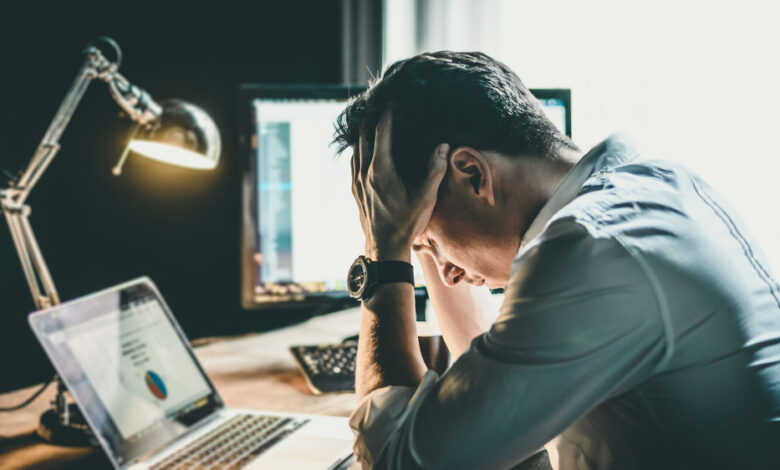
“I’m so stressed out” is a common phrase heard in our society today in almost every conversation we have with family, friends, and co-workers. Stress has become an almost constant companion. While we often associate stress with significant life events or overwhelming pressures, there exists a lesser-known but equally insidious form called Microstress. This subtle yet persistent form of stress gradually erodes our well-being and disrupts both our personal and professional lives. In this article, we will delve into the causes and effects of microstress, explore its impact on individuals, and offer strategies to identify and counter it. But first, how do you really define Microstress?
Understanding Microstress
Microstress refers to the accumulation of minor stressors and triggers in our daily lives. They are those small moments of stress that appear manageable on their own. These stressors may seem trivial individually, but their cumulative effect can be significant over time -for example, being stuck in peak hour traffic, dealing with a high volume of emails, encountering technology glitches, or facing constant interruptions, or a vague, worrying text from your teen flashing on your phone while you’re in a meeting, the appearance of a colleague who always wants to vent to you, or having to inform your team that the project you’ve all been working extra hours on is no longer a priority.

However, these microstresses are not as harmless as they appear. Because they are so small and fleeting, they do not activate our brains’ typical stress response to help us manage; instead, microstress embeds themselves in our minds and accumulates over time. The long-term consequences of this buildup are crippling: It depletes our energy, harms our physical and emotional health, and contributes to obesity.
You may agree to most of these senarios that you’d typically refer to as being ‘stressed out’. But its not really stress. How is stress different from Microstress, you may ask.
Stress refers to major events and high-pressure situations, whereas microstress refers to the accumulation of tiny stressors in everyday life. Microstress is chronic and cumulative, whereas stress is strong, acute, and often dissolves with time. Both have a negative impact on one’s well-being, but stress necessitates specific coping mechanisms. Microstress must be identified and managed through tactics such as setting boundaries and practicing self-care. Both must be addressed in order to preserve overall health, with stress requiring more targeted management.
So, what causes Microstress?
There are several factors that contribute to the prevalence of microstress in our modern lives. The rapid advancement of technology has created an “always-on” culture, where constant connectivity blurs the line between work and personal life. The pressure to multitask and meet increasing demands within limited timeframes adds to the burden. Moreover, societal expectations, financial pressures, and the pursuit of perfection can exacerbate microstress.
Understanding the biology of Microstress and its effects on our overall wellbeing
How Microstress is generated is concerned with the complex physiological responses that occur in our bodies. When the body is repeatedly exposed to small stresses, the stress response system, which includes the hypothalamus, pituitary gland, and adrenal glands, becomes active. This causes the release of stress hormones such as cortisol and adrenaline, which can have a wide-ranging impact on numerous biological systems. Chronic microstress can disturb the delicate balance of these stress hormones over time, resulting in dysregulation and potentially harmful health repercussions. Microstress biology emphasizes the interconnection of our physical and mental health, emphasizing the significance of regulating and reducing these subtle stresses for optimal health.
Microstress is insidious because it infiltrates our daily lives in larger quantities, with higher intensity and faster pace than ever before, a trend that continues to rise with technological advancements and constant connectivity. This overwhelming exposure to microstress confuses our bodies, as they are unaccustomed to coping with such a persistent onslaught. Our natural response to stress, known as allostasis, helps maintain internal balance and protect our bodies. However, the familiarity of our brains with conventional stressors enables them to recognize threats and activate the appropriate fight-or-flight responses.
Microstress has a far-reaching impact that goes beyond its immediate impact. Minor pressures in daily life can progressively destroy our well-being, affecting many facets of our existence. Microstress can have an impact on our personal relationships by increasing irritation and decreasing patience, which can strain interactions with loved ones. It can also infiltrate our professional lives, compromising productivity, decision-making, and work-life balance. Furthermore, the presence of microstress on a continuous basis might have an impact on our physical health, sleep habits, and general mental well-being. The cascading effect of microstress emphasizes the significance of identifying and treating these minor stresses in order to live a healthy and fulfilled life.
Recognizing the Signs and counteracting Microstress:
Identifying microstress can be challenging since it often disguises itself as normal daily frustrations. However, certain indicators can help us recognize its presence. These may include feeling constantly overwhelmed, experiencing a general sense of unease or irritability, having difficulty focusing or completing tasks, and feeling mentally and physically exhausted despite minimal exertion.

Fortunately, several small steps can help counteract microstress and restore balance to our lives:
1. Mindfulness and relaxation techniques: Practicing meditation, deep breathing exercises, or engaging in activities such as yoga can help alleviate stress and enhance resilience.
2. Time management and prioritization: Breaking tasks into smaller, manageable steps and prioritizing them can reduce the sense of overwhelm and increase productivity.
3. Setting boundaries: Establishing clear boundaries between work and personal life, creating designated technology-free zones, and setting realistic expectations for oneself can help manage microstress.
4. Self-care: Prioritizing self-care activities such as exercise, sufficient sleep, healthy eating, and pursuing hobbies can enhance overall well-being and resilience.
5. Seeking support: Talking to friends, family, or a mental health professional can provide valuable support and perspective when dealing with microstress.
Microstress may be subtle, but its cumulative effects can be detrimental to our personal and professional lives. By recognizing the signs, understanding the causes, and employing effective coping mechanisms, we can regain control over our well-being. Prioritizing self-care, setting boundaries, and seeking support are vital steps toward countering microstress and fostering a healthier and more fulfilling life. Remember, it’s the little steps that make the most significant difference in our battle against microstress.




